I am looking to use the Factory Method Pattern in order to make the development of my Swing UI quicker and more manageable.
In general, its an MDI application using JInternalFrames. I have a lot of settings, types as I call them, in the system (Eg. userTypes, accountTypes, etc.) I have a fixed UI which I've decided to use. Thing is, there are over 50 of these types in the system, so the factory method pattern seems to be the most manageable solution. Below are two screenshots of a working app.


I was looking at [this example][3] but since I wont be able to estimate the number of tabs I would require to store all info in a record, I would need to be able to add multiple tabs and controls (labels, textboxes, tables, comboboxes, etc.) within these tabs.
Based on the example, is it possible to create a JTabbedPane in the abstract class and modify and add to it in the subclasses? I tried the following and am a bit lost:
public AbstractTypeInternalFrame(String title) {
setBounds(100, 100, 808, 589);
JToolBar toolBar = new JToolBar();
getContentPane().add(toolBar, BorderLayout.NORTH);
JButton btnAdd = new JButton("Add");
toolBar.add(btnAdd);
JButton btnSave = new JButton("Save");
btnSave.addActionListener(new ActionListener() {
public void actionPerformed(ActionEvent arg0) {
}
});
toolBar.add(btnSave);
JButton btnDelete = new JButton("Delete");
toolBar.add(btnDelete);
JButton btnCancel = new JButton("Cancel");
btnCancel.addActionListener(new ActionListener() {
public void actionPerformed(ActionEvent e) {
}
});
toolBar.add(btnCancel);
JTabbedPane recordTabs = new JTabbedPane(makeRecordTabPane());
getContentPane().add(recordTabs, BorderLayout.NORTH);
JSeparator recordSearchSeparator = new JSeparator();
getContentPane().add(recordSearchSeparator, BorderLayout.NORTH);
}
protected abstract int makeRecordTabPane();
with the method makeRecordTabPane() require to return an int.
As you can see, I'm a little lost and just need some direction as to how to proceed with such a pattern. If any has any advice or even examples/links, it would be much appreciated.
I realize my question is vague, so if any clarification is required on my side, please feel free to ask.
Best regards.